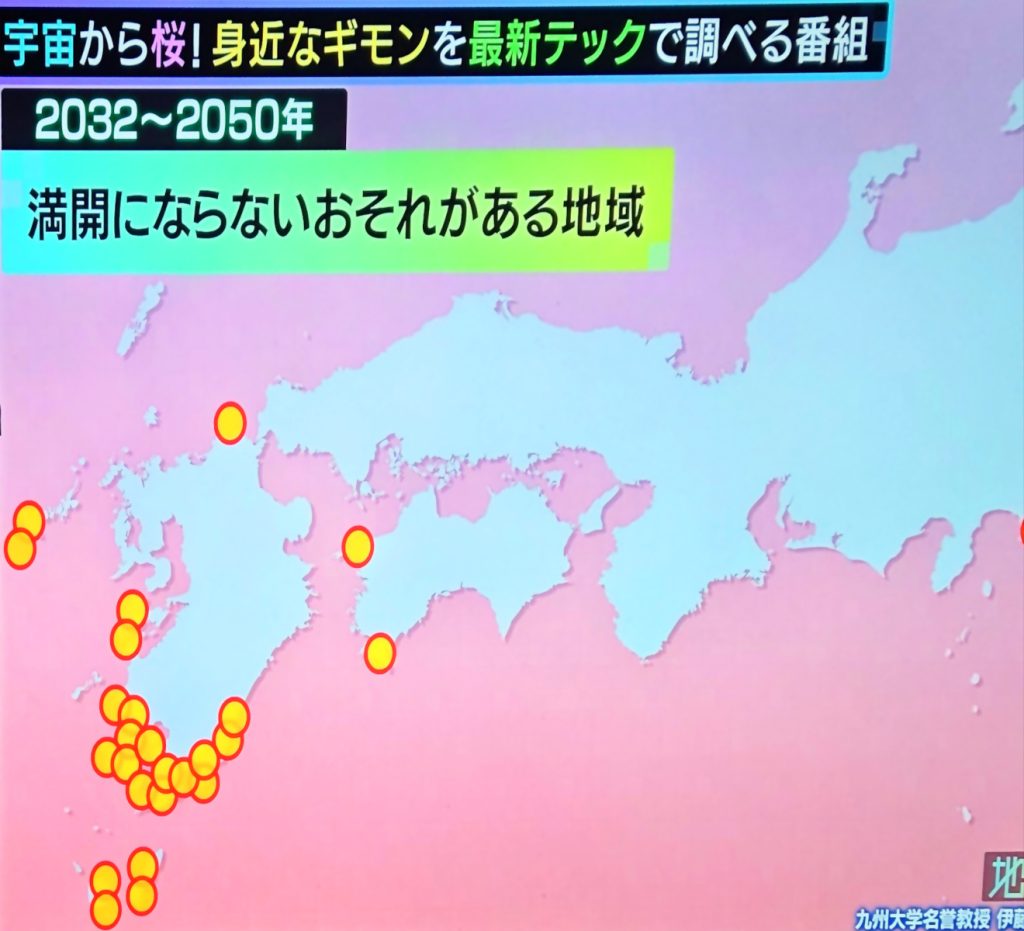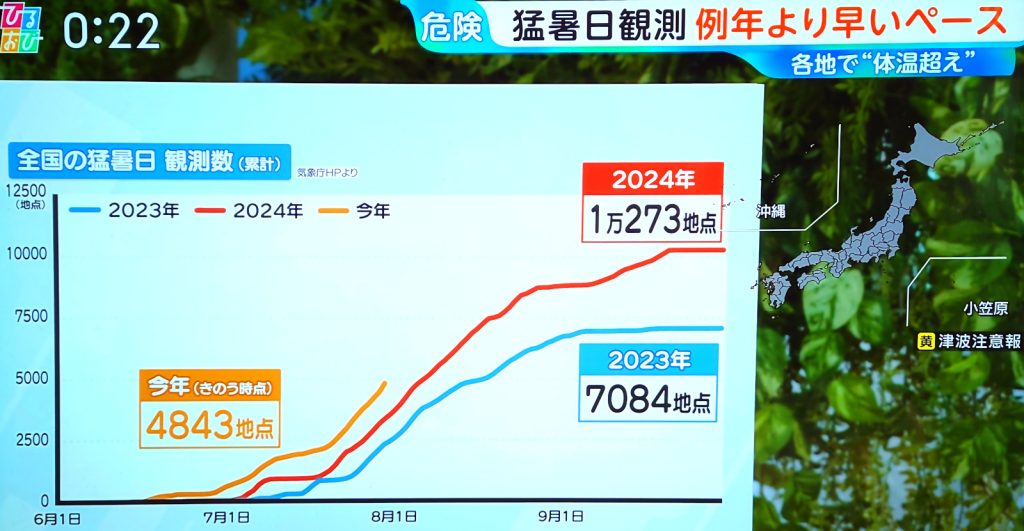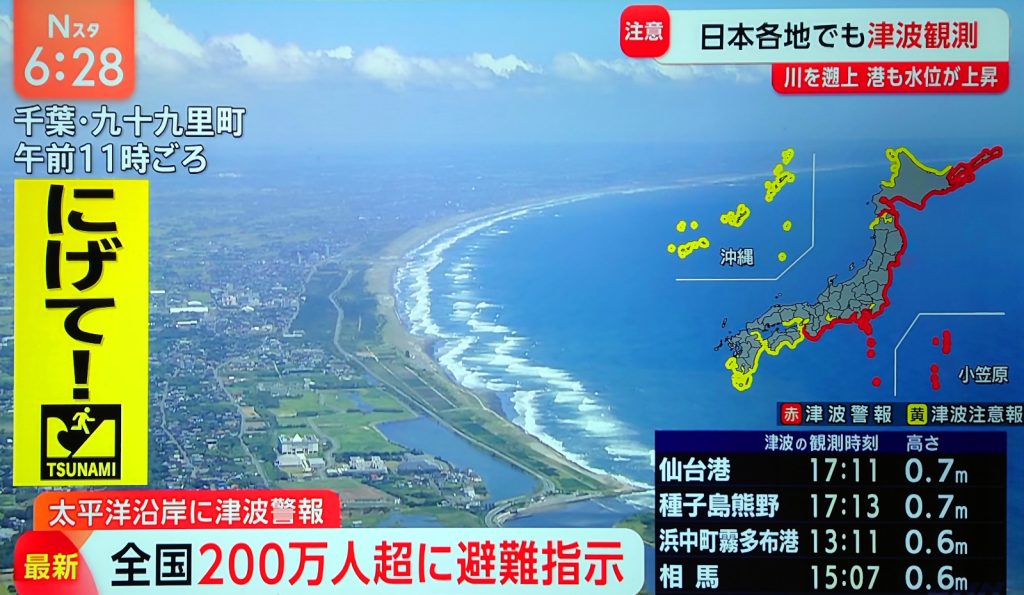The worldwide climate crisis is profoundly reshaping Japan from daily life to cherished cultural traditions to vital food production. The dramatic transformations I witnessed here in 20+ years require attention & adaptation. This week, Japan reached 41.2℃ for the first time in recorded history, notably heated by the Foehn effect (Japan’s mountainousness worsened extreme heat in villages/towns from multiple directions at the same time)! Unlike in France/USA, climate anger is imperceptible in Japan, and most Japanese ignore that the TV-omnipresent SDGs target 2030 not 2050.
Seasonal Crises?
In Japan, the climate crisis has far-reaching effects related to the seasons, including legal changes for summers.
During spring, beloved “sakura” cherry blossoms peak earlier or disappear altogether:
- Talking with elders reveals that cherry blossoms used to accompany school entrance ceremonies (April) not graduation photos (March) like nowadays.
- In Kyoto, 2021 cherry blossoms peaked earlier than ever (26 March) according to imperial records started in 812.
- In Kagoshima prefecture, winter warms so much that some trees do not notice it anymore, ultimately losing their bloom trigger. Heart-breaking plans to switch species before estimated vanishing by 2032-2050 lead botanists to scour Japan for areas with similar climate featuring cherry species that still bloom. Accordingly, satellite imagery and seed repositories get increased attention. Surprisingly, local knowledge becomes pertinent beyond its established boundaries…

Summer exhibits the most life-threatening changes:
- Japan just tightened its labour laws to prevent related deaths at workplaces (record-high heatstroke-induced 31 deaths and 1,226 injuries nationwide in 2024), with penalties including imprisonment. This hits close to home because a friend guiding for another company collapsed and her medical team explained that she’d have died if treated even just 1 hour later. The Mainichi newspaper states “Companies are required to take measures for staff working for 60 consecutive minutes or for four hours per day in temperatures exceeding 31℃, or at 28℃ or above on the Wet Bulb Globe Temperature — a global heat index calculated based on multiple factors including humidity”.
- Extremely hot days start earlier and accumulate to higher levels.
- Even Siberia’s neighbour Hokkaido reached 39℃ last week.
- In 2024, Nagoya residents suffered 24 consecutive nights between 26.4℃ and 28.5℃ (daytime up to 39.3℃).
- Smartly, Japan will hold the 2026 Asian Games in autumn. Tokyo 2020 Olympic & Paralympic Games were held in July/August…

A Societal Crisis?
The climate crisis significantly impacts society as a whole, individuals especially elders, and victims of earthquakes in Japan.
The climate crisis threatens a pillar of the Japanese culture: its cherished “matsuri” festivals. It can lead to cancellations when e.g. flowers bloom out of season. More often, it leads to attendance scarcity due to degraded seasonal charm or excessive discomfort. Such scarcity generates vicious circles: food stalls raise prices for profitability, decreasing fun and demotivating festival-goers from attending future festivals. Rescheduling countermeasures may fail due to conflicts with other activities/events or due to religious imperatives (e.g. Obon summer festival of the dead) but switching to more night-time festivals may succeed.
More individually, Japan’s demography presents a unique vulnerability. 29% of the Japanese are 65+ y.o., less likely to feel and survive extreme heat. Children & pets are also at increased risk of heatstroke/injury because they are closer to, or directly paws on, scorching asphalt. In summer, health advisories prevalent on TV highlight these risks and recommend frequent hydration, significant salt intake, and indoor stays.
Finally, extreme weather increases existential threats in an earthquake-prone island nation like Japan (annual average: 1,000+ earthquakes of magnitude 4+). Due to anticipated aftershocks & tsunamis, one may for example want to stay in a park on a hill top to avoid fragilized buildings and sea-level grounds during 24 hours after a major earthquake…

Self-Sufficiency & Economic Impacts
Japanese TV frequently features impacts of the climate crisis in Japan without mentioning it, mostly through news related to the availability & price of seasonal foods.
The climate crisis impacts Japan’s seas and lands:
- Fish and other marine species alter their migratory paths and reproduce elsewhere. This creates immense challenges for ports where fishing matches dedicated equipment & techniques.
- Seaweed production has decreased, and higher sea temperatures would lead to e.g. kombu rotting.
- Agriculture is impacted differently due to e.g. floods, water scarcity, and sun exposure. Food production is lost, taste is degraded, shapes/colours become unusual (complicating logistics & sales)…
- The situation in unequal, with apparent benefits in some areas. For example, many farmers & winemakers now cultivate Pinot Noir grapes and produce wine in Siberia’s neighbour Hokkaido prefecture.
- Beyond, flowering/ripening shifts also sadly lead to food scarcity for e.g. bears. In turn, this leads to encounters in Japanese towns that are dangerous for both the animals and humans.
Following the market, businesses diversify their strategies to catch new opportunities:
- Some cities/regions rebrand themselves as producers of local specialties e.g. tropical fruit, peaches instead of apples, lobster instead of fish…
- Winter (snow) resorts find summer clientele seeking cool escapes.
- Makers switch their designs from rain umbrellas to sun umbrellas, railway companies lend sun umbrellas…
- Japan Railways and Weather News partnered to encourage long-distance train rides to cool destinations e.g. northern mountains. They notably stuck on platforms side-by-side maps with warm vs cool temperatures and location names. This “Cool escapes by train!” campaign ad raised eyebrows…
An Easy & Effective Mitigation Step
While discussions around the SDGs are prevalent in Japan, few suggest a most practical & effective action that we can all take to mitigate the climate crisis: favouring a plant-based diet. This tangible step for a more resilient future can be immediate; it’s easy, healthy and can be delicious. For example, my plant-based journey gained momentum during the COVID-19 pandemic as I subscribed to deliveries of organic produce and vegan mayonnaise/milk. If you haven’t yet explored plant-based nutrition, I encourage you to consider this impactful change now!
